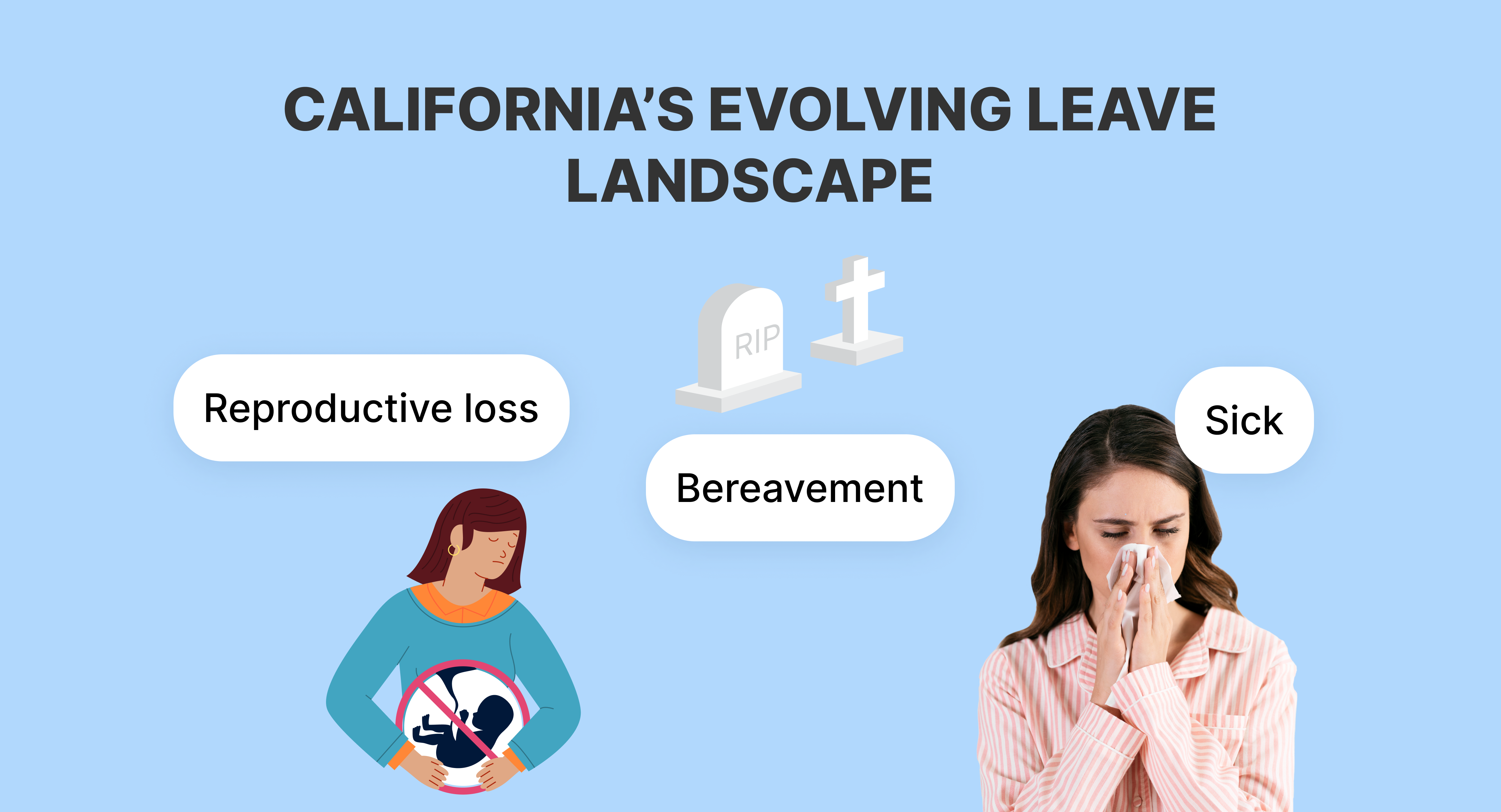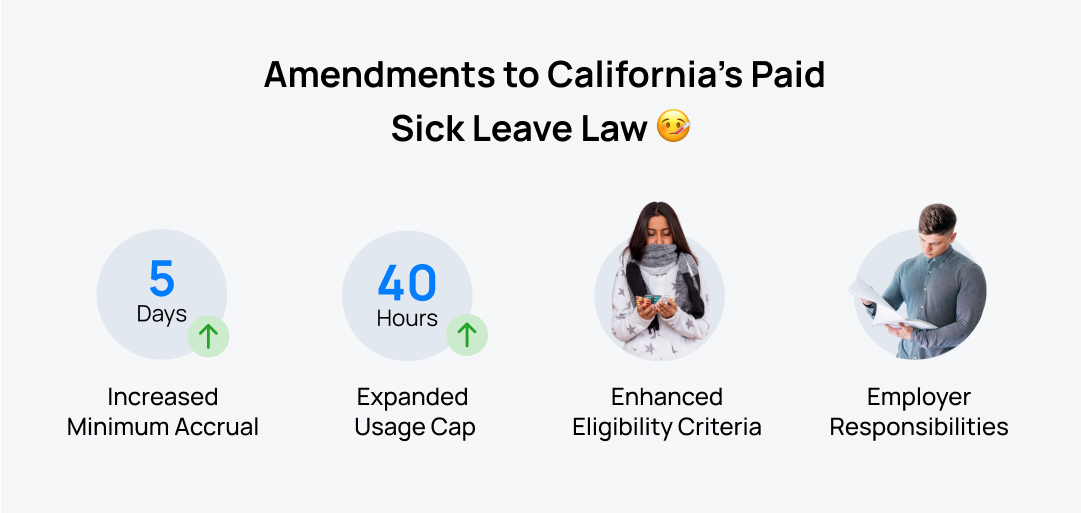California's Evolving Leave Landscape

Introduction
Navigating California’s employment laws is akin to navigating a maze - complex, ever-changing, and full of surprises. With recent updates in leave legislation, employers face new challenges in managing employee time off while ensuring compliance and fostering a supportive workplace environment. In this article, we’ll delve into the intricacies of three significant leave categories: bereavement leave, reproductive loss leave, and amendments to California’s Paid Sick Leave Law. Let’s embark on this journey to understanding and adapting to the latest changes in California’s employment landscape.
Highlights
- Mandated Reproductive Loss Leave: California’s new legislation requires employers to provide up to 5 days of unpaid leave for reproductive loss events, posing challenges for resource allocation and compliance.
- Amendments to Paid Sick Leave Law: Effective January 1, 2024, changes to California’s Paid Sick Leave Law demand attention from employers regarding accrual rates, usage caps, and eligibility criteria alignment.
- Employer Responsibilities: The legislation outlines employer responsibilities, including maintaining confidentiality and accurately calculating sick leave payments, prompting the need for comprehensive policy reviews and updates.
leave emails? Track your employee's leave with Leave Balance

Understanding Bereavement Leave and Reproductive Loss Leave
Bereavement Leave
Effective January 1, 2023, California implemented a bereavement leave law, mandating up to five days of unpaid leave for the death of a family member. This law applies to employers with at least five employees, encompassing a wide range of family members. Employees are entitled to use any available paid time off during this leave, adding a layer of complexity for employers in managing resources and ensuring compliance.
Reproductive Loss Leave
Building upon the bereavement leave law, California introduced reproductive loss leave, effective January 1, 2024. This new leave mandates up to five days of unpaid leave for reproductive loss events, such as miscarriage, stillbirth, or failed adoption. With a 20-day cap in a 12-month period, employers must navigate the sensitive nature of these situations while adhering to legal requirements and supporting affected employees.
Navigating Amendments to California’s Paid Sick Leave Law
On October 4, 2023, Senate Bill 616 brought significant amendments to California’s Paid Sick Leave Law, demanding attention from employers to align policies and ensure compliance. Key highlights include:
- Increased Minimum Accrual: Eligible employees must now accrue a minimum of five days (40 hours) of paid sick leave per year, up from three days (24 hours).
- Expanded Usage Cap: The annual usage cap has been raised from 24 hours to 40 hours, providing employees with more flexibility in utilizing sick leave.
- Enhanced Eligibility Criteria: Employees working in California for 30 or more days within a year are entitled to paid sick days, subject to a 90-day employment period.
- Employer Responsibilities: From maintaining confidentiality to calculating sick leave payments, employers must adhere to stringent requirements outlined in the legislation, ensuring comprehensive policy reviews and updates.

Adapting to Change
As California continues to expand and update its employment laws, employers must remain vigilant and proactive in adapting to change. Updating employee handbooks, providing training to HR personnel, and fostering open communication are essential steps in navigating these evolving regulations successfully. By prioritizing sensitivity, compliance, and employee support, employers can create an inclusive workplace that promotes well-being and resilience.
Conclusion
In the ever-changing landscape of California’s employment laws, staying abreast of the latest developments is crucial for employers. With recent updates in bereavement leave, reproductive loss leave, and amendments to the Paid Sick Leave Law, employers must adapt their policies and practices to ensure compliance and support their workforce effectively. Innovative solutions like ‘Leave Balance’ Employee Leave Management software can streamline leave management processes, providing employers with the tools they need to navigate California’s intricate leave landscape with confidence and success. By embracing change and prioritizing employee well-being, employers can foster a positive workplace culture while staying compliant with evolving regulations.